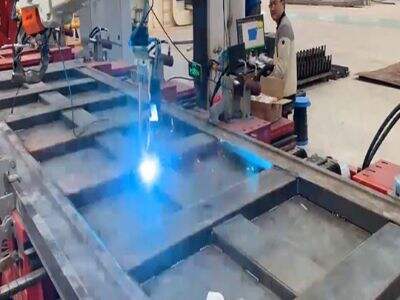Today we’ll discuss how special sensors can help us make welding better. These sensors are small eyes; they see things that we cannot see. They can even help us make fewer mistakes when we’re welding. Let’s take a closer look at how they work and how they can make us healthier and safer.
What Role Can Real-Time Sensor Feedback Play in Minimizing Rework in Welding?
We can’t afford not to get it right the first time when welding. But occasionally we screw things up and have to start again. Rework is what this is called, and it can be a waste of time and materials. Using sensor feedback in real time can help us to prevent rework by keeping us informed in real time about our welding job. That way, we can correct any errors immediately, and ensure we’ve done the perfect weld.
Advantages of Using Sensors to Reduce Rework in Welding
There are numerous advantages of process sensors in welding. One very important advantage here, is the fact sensors can support us to achieve even better quality of our welds. They can tell us whether our welds are solid and accurate in real time. Not only can this save us time and money, but also make our welding jobs safer and dependable.
Real-Time Sensor Feedback and Welding Performance Improvement
With feedback from real-time sensors, we can make our welding even better in more ways than you may realize. Sensors can also allow us to control important welding parameters including the temperature or the speed. They also can warn us of any potential problems or errors before they grow into a larger one. This is something that can help us weld better and huild faster and more efficiently.
Reducing Rework in Welding by Using Real-Time Data
Continuous data from turn sensors can guide us to eliminate rework in welding when we have the data we need to adjust while we work. For instance, if the sensor reads a higher or lower temperature than it should, we can correct it on the spot and prevent any mistakes. This helps prevent rework and make sure our weld is done right the first time.
The Function of Sensing in Welding Rework A number of components inside a Smart Sensorfusion unit are discussed.
Sensors are essential in minimizing the rework in welding process. Through Intelligent Cutting continuous monitoring of the welding process and instantaneous feedback, sensors can assist us to find and fix mistakes before they become significant. This can help us to look better, to save time and material.
To sum it up: real-time sensor feedback is a key that can unlock savings and improved quality in our welding process. Through sensors that we employ in observing our welding projects and giving us immediate feedback, we can be confident that we will have strong and accurate and reliable welds. Sensors will enable us to work with welding in a more efficient and secure way, and make our work less costly. Let’s take full advantage of the sensors in welding, and take our welding projects to the next level!
 EN
EN
 AR
AR
 HR
HR
 NL
NL
 FR
FR
 DE
DE
 EL
EL
 HI
HI
 IT
IT
 JA
JA
 KO
KO
 PT
PT
 RO
RO
 RU
RU
 ES
ES
 TL
TL
 IW
IW
 ID
ID
 LV
LV
 LT
LT
 SR
SR
 SK
SK
 UK
UK
 VI
VI
 GL
GL
 HU
HU
 TH
TH
 TR
TR
 FA
FA
 AF
AF
 MS
MS
 MK
MK
 HY
HY
 AZ
AZ
 KA
KA
 UR
UR
 BN
BN
 LA
LA
 MN
MN
 KK
KK

